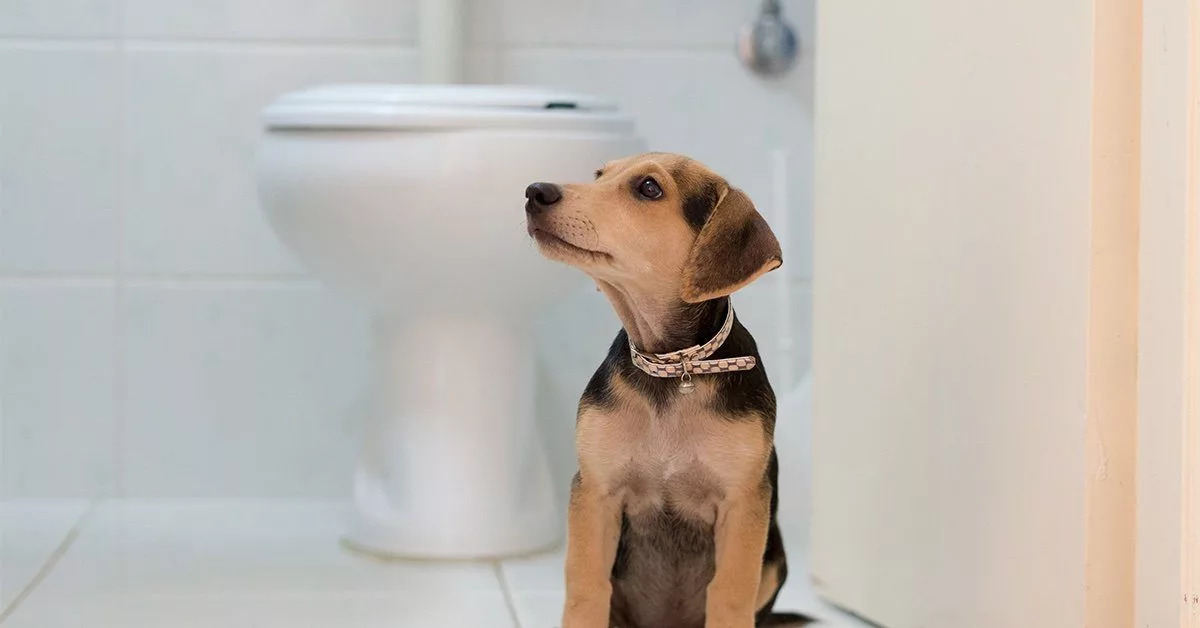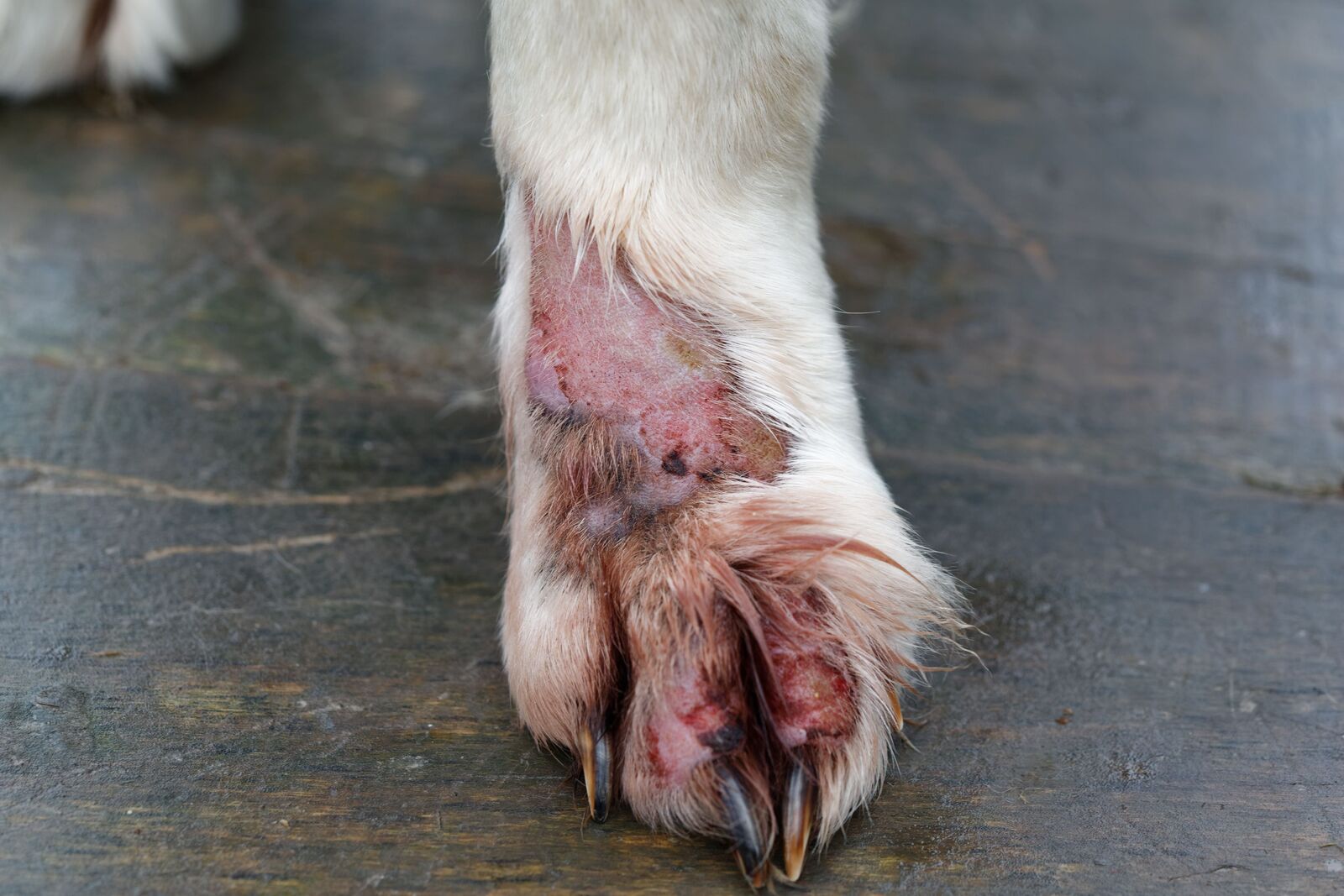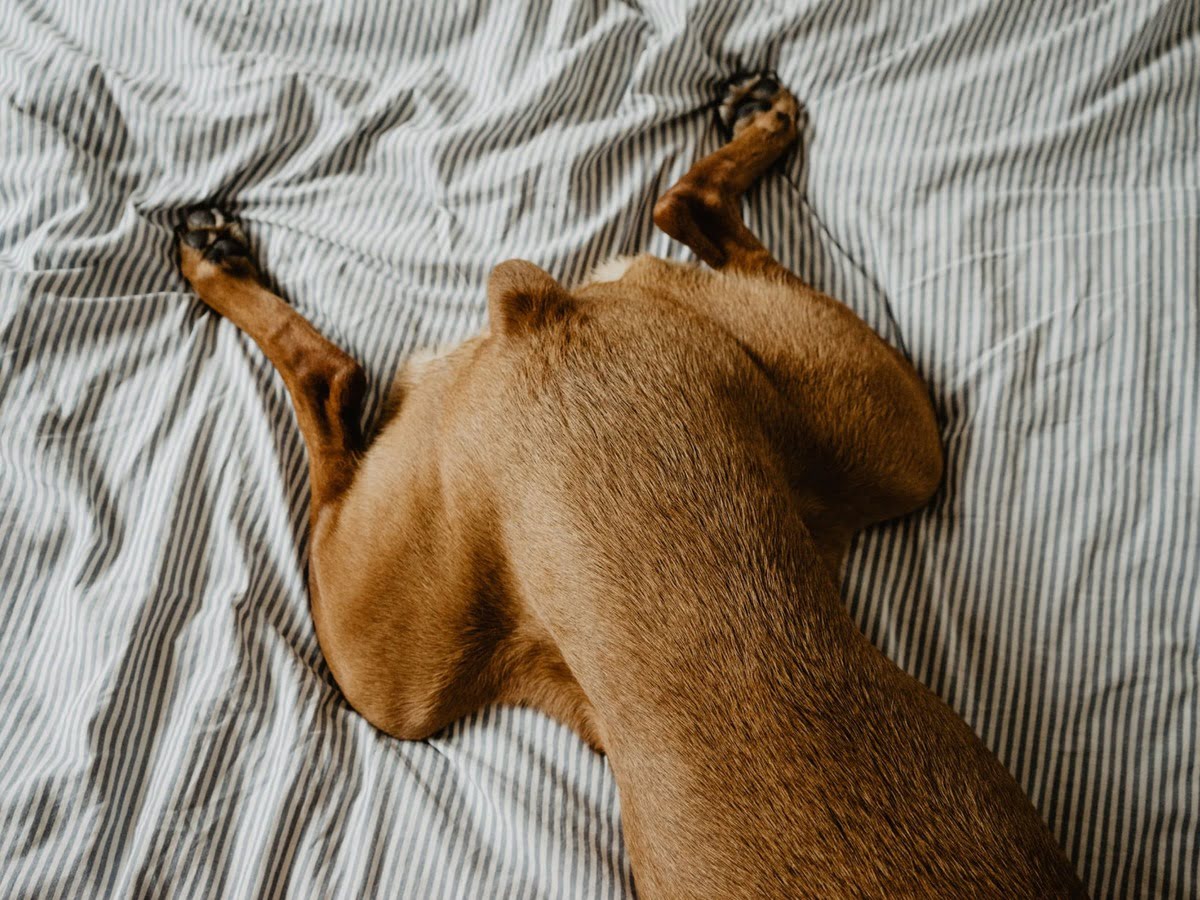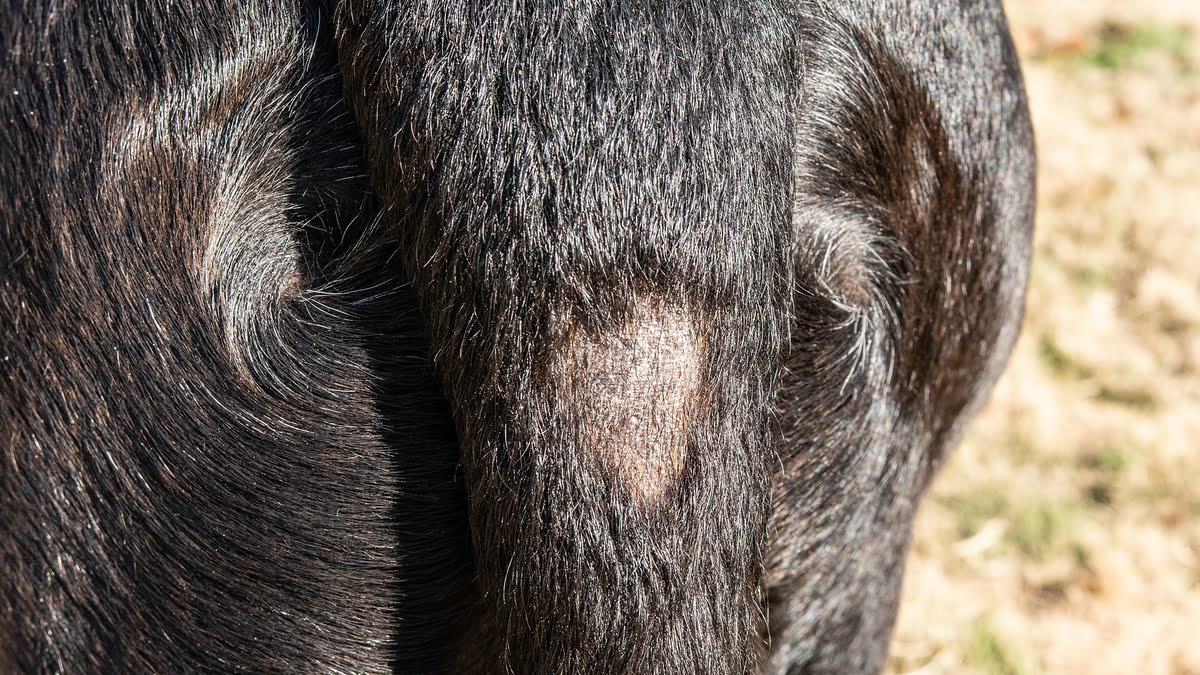Home>Health & Wellness>Common Health Issues>Urinary Health>What Can Cause Urinary Incontinence In Dogs


Urinary Health
What Can Cause Urinary Incontinence In Dogs
Published: February 16, 2024
Learn about the causes of urinary incontinence in dogs and how to maintain their urinary health. Find solutions for your pet's urinary issues.
(Many of the links in this article redirect to a specific reviewed product. Your purchase of these products through affiliate links helps to generate commission for Pawsomeoldies.com, at no extra cost. Learn more)
Table of Contents
Introduction
Urinary incontinence in dogs is a condition that can significantly impact their quality of life and the bond they share with their human companions. It is a distressing issue that can lead to frustration and concern for pet owners. Understanding the causes and treatment options for urinary incontinence is crucial for providing the best care for our furry friends.
Urinary incontinence refers to the involuntary leakage of urine from the bladder. It can manifest in various forms, including dribbling, frequent urination, or complete loss of bladder control. This condition is not only inconvenient for pet owners but can also be uncomfortable and embarrassing for the affected dogs.
As responsible pet owners, it's important to recognize the signs of urinary incontinence in our canine companions. This may include noticing wet spots where the dog has been lying, a strong odor of urine, or an increase in the frequency of urination. Additionally, some dogs may exhibit signs of discomfort or irritation in the genital area, indicating a potential issue with urinary control.
In this article, we will delve into the various factors that can contribute to urinary incontinence in dogs. From medical conditions to behavioral and environmental influences, we will explore the multifaceted nature of this condition. By gaining insight into the underlying causes, we can better equip ourselves to address and manage urinary incontinence in our beloved pets.
Furthermore, we will explore the available treatment options, ranging from medication and dietary adjustments to behavioral modifications and potential surgical interventions. By understanding the diverse approaches to managing urinary incontinence, pet owners can make informed decisions in collaboration with their veterinarians to improve their dog's well-being.
Join us as we embark on a journey to unravel the complexities of urinary incontinence in dogs, empowering pet owners with the knowledge and resources to support their furry companions through this challenging condition.
Normal urinary function in dogs
Normal urinary function is essential for maintaining the overall health and well-being of dogs. Understanding the intricacies of this process provides valuable insight into the potential disruptions that can lead to urinary incontinence.
The urinary system in dogs is responsible for eliminating waste and regulating the balance of fluids and electrolytes within the body. It comprises the kidneys, ureters, bladder, and urethra, all of which play crucial roles in the formation and excretion of urine.
The process begins in the kidneys, where blood is filtered to remove waste products and excess substances, ultimately forming urine. The urine then travels through the ureters, which are narrow tubes connecting the kidneys to the bladder. The bladder serves as a reservoir for urine storage, expanding as it fills and contracting to expel urine through the urethra.
In a healthy dog, the urinary sphincter muscles, located at the junction of the bladder and urethra, maintain control over the release of urine. These muscles remain closed to prevent leakage and open when the dog consciously urinates. Additionally, the nervous system plays a vital role in coordinating the signals that regulate bladder function, ensuring proper timing and control of urination.
Normal urinary function in dogs involves a delicate balance of physiological processes, including the filtration of blood, concentration of urine, and coordinated muscular activity. This intricate system enables dogs to effectively eliminate waste products while maintaining the appropriate fluid and electrolyte levels in their bodies.
Understanding the intricacies of normal urinary function provides a foundation for recognizing abnormalities that may lead to urinary incontinence. By observing changes in urination patterns, the presence of blood in the urine, or signs of discomfort during urination, pet owners can identify potential issues and seek timely veterinary care.
In the next sections, we will explore the common causes of urinary incontinence in dogs, shedding light on the diverse factors that can disrupt the intricate balance of the urinary system. Through this exploration, we aim to equip pet owners with the knowledge to recognize, address, and manage urinary incontinence in their canine companions.
Common causes of urinary incontinence in dogs
Urinary incontinence in dogs can stem from a variety of underlying factors, ranging from physiological conditions to behavioral and environmental influences. Understanding these common causes is crucial for identifying the root of the issue and implementing appropriate interventions. Let's delve into the multifaceted reasons behind urinary incontinence in our canine companions.
1. Hormonal Imbalance:
Hormonal fluctuations, particularly a decrease in estrogen levels in spayed female dogs, can lead to weakened urinary sphincter muscles. This weakening may result in involuntary urine leakage, especially during periods of relaxation or sleep. Additionally, older male dogs may experience hormonal changes that contribute to urinary incontinence.
2. Urinary Tract Infections (UTIs):
UTIs can cause discomfort and inflammation in the urinary tract, leading to increased urgency and frequency of urination. In some cases, dogs may experience urinary incontinence as a result of the infection irritating the bladder and urethra, compromising their ability to control urination.
3. Neurological Disorders:
Neurological conditions, such as spinal cord injuries, degenerative myelopathy, or nerve damage, can disrupt the communication between the bladder and the brain. This interference may result in impaired bladder control, leading to urinary incontinence in affected dogs.
4. Bladder Stones or Tumors:
The presence of bladder stones or tumors can obstruct the normal flow of urine and cause irritation to the bladder lining. This irritation may trigger episodes of urinary incontinence as the dog struggles to empty its bladder completely.
5. Congenital Anomalies:
Some dogs may be born with congenital abnormalities in the urinary system, such as ectopic ureters or anatomical defects. These anomalies can predispose them to urinary incontinence from an early age, requiring specialized diagnostic and treatment approaches.
6. Age-Related Changes:
As dogs age, their urinary system undergoes natural changes, including decreased muscle tone in the bladder and urethra. These age-related changes can contribute to urinary incontinence, particularly in senior dogs, as the muscles responsible for urinary control become less efficient.
7. Medications and Diuretics:
Certain medications, such as corticosteroids or diuretics, can increase urine production and lead to urinary incontinence in some dogs. Understanding the potential side effects of medications is essential for recognizing and addressing urinary issues related to drug therapy.
8. Obesity and Physical Stress:
Excess weight and physical stress on the bladder and surrounding structures can impact urinary control in dogs. Obesity-related pressure on the bladder may result in leakage or difficulty holding urine, highlighting the importance of maintaining a healthy weight for overall urinary health.
By shedding light on these common causes of urinary incontinence in dogs, pet owners can gain valuable insights into the potential triggers of this condition. Recognizing the underlying factors that contribute to urinary incontinence is the first step toward seeking appropriate veterinary care and implementing targeted interventions to support the urinary health of our beloved canine companions.
Medical conditions that can lead to urinary incontinence
Several medical conditions can contribute to urinary incontinence in dogs, encompassing a diverse range of physiological disruptions that impact the urinary system. Understanding these underlying medical issues is crucial for identifying the root cause of urinary incontinence and formulating targeted treatment strategies. Let's explore the medical conditions that can lead to urinary incontinence in our canine companions.
1. Hormonal Imbalance:
Hormonal fluctuations, particularly a decrease in estrogen levels in spayed female dogs, can lead to weakened urinary sphincter muscles. This weakening may result in involuntary urine leakage, especially during periods of relaxation or sleep. Additionally, older male dogs may experience hormonal changes that contribute to urinary incontinence.
2. Urinary Tract Infections (UTIs):
UTIs can cause discomfort and inflammation in the urinary tract, leading to increased urgency and frequency of urination. In some cases, dogs may experience urinary incontinence as a result of the infection irritating the bladder and urethra, compromising their ability to control urination.
3. Neurological Disorders:
Neurological conditions, such as spinal cord injuries, degenerative myelopathy, or nerve damage, can disrupt the communication between the bladder and the brain. This interference may result in impaired bladder control, leading to urinary incontinence in affected dogs.
4. Bladder Stones or Tumors:
The presence of bladder stones or tumors can obstruct the normal flow of urine and cause irritation to the bladder lining. This irritation may trigger episodes of urinary incontinence as the dog struggles to empty its bladder completely.
5. Congenital Anomalies:
Some dogs may be born with congenital abnormalities in the urinary system, such as ectopic ureters or anatomical defects. These anomalies can predispose them to urinary incontinence from an early age, requiring specialized diagnostic and treatment approaches.
6. Age-Related Changes:
As dogs age, their urinary system undergoes natural changes, including decreased muscle tone in the bladder and urethra. These age-related changes can contribute to urinary incontinence, particularly in senior dogs, as the muscles responsible for urinary control become less efficient.
7. Medications and Diuretics:
Certain medications, such as corticosteroids or diuretics, can increase urine production and lead to urinary incontinence in some dogs. Understanding the potential side effects of medications is essential for recognizing and addressing urinary issues related to drug therapy.
8. Obesity and Physical Stress:
Excess weight and physical stress on the bladder and surrounding structures can impact urinary control in dogs. Obesity-related pressure on the bladder may result in leakage or difficulty holding urine, highlighting the importance of maintaining a healthy weight for overall urinary health.
By understanding the diverse medical conditions that can contribute to urinary incontinence in dogs, pet owners can collaborate with veterinarians to conduct thorough evaluations and implement targeted treatment plans. Addressing the underlying medical issues is essential for effectively managing urinary incontinence and promoting the well-being of our beloved canine companions.
Behavioral and environmental factors
In addition to medical conditions and physiological changes, behavioral and environmental factors can also play a significant role in the development of urinary incontinence in dogs. Understanding these influences is essential for comprehensively addressing the complexities of this condition and implementing holistic management strategies.
1. Stress and Anxiety:
Stress and anxiety can have a profound impact on a dog's urinary habits. Environmental stressors, such as changes in routine, loud noises, or the presence of unfamiliar individuals or animals, can trigger heightened anxiety in dogs. This emotional distress may manifest as urinary incontinence, as the dog struggles to maintain normal bladder control in response to the perceived threat or discomfort.
2. Inadequate Elimination Opportunities:
Insufficient access to appropriate elimination areas can contribute to urinary incontinence, particularly in situations where dogs are unable to relieve themselves as needed. This may occur in confined living spaces, during extended periods of confinement, or in environments where outdoor access is limited. In such cases, dogs may experience involuntary urine leakage due to the inability to urinate when necessary.
3. Behavioral Marking:
Some dogs engage in territorial marking behavior, where they urinate to assert their presence in a particular environment. While this behavior is typically associated with intact male dogs, both male and female dogs may exhibit marking tendencies. In situations where marking behavior becomes excessive or uncontrollable, it can contribute to urinary incontinence issues within the household.
4. Lack of Routine and Structure:
Inconsistent routines and a lack of structured elimination schedules can impact a dog's urinary habits. Dogs thrive on predictability and routine, and disruptions to their established schedules may lead to stress and subsequent urinary incontinence. Additionally, inadequate opportunities for regular bathroom breaks can exacerbate urinary control challenges.
Read more: What Causes A Dog’s Eye To Bulge
5. Environmental Changes:
Changes in the dog's living environment, such as relocation to a new home, introduction of new pets, or alterations in household dynamics, can trigger stress and anxiety, potentially leading to urinary incontinence. Dogs may struggle to adapt to unfamiliar surroundings or social dynamics, resulting in disruptions to their urinary behavior.
6. Social Dynamics and Hierarchy:
In multi-dog households, social dynamics and hierarchical structures can influence urinary habits. Submissive or anxious dogs may experience urinary incontinence as a response to perceived social pressures or conflicts within the pack. Understanding and addressing these dynamics is crucial for mitigating the impact of social stress on urinary control.
By recognizing the influence of behavioral and environmental factors on urinary incontinence, pet owners can take proactive measures to create a supportive and stress-free environment for their dogs. This may involve implementing consistent routines, providing ample opportunities for elimination, and addressing sources of stress and anxiety. By addressing these multifaceted influences, pet owners can contribute to the overall well-being and urinary health of their canine companions.
Treatment options for urinary incontinence in dogs
Addressing urinary incontinence in dogs often requires a multifaceted approach, encompassing medical interventions, lifestyle modifications, and supportive care to effectively manage the condition. Veterinary guidance is essential for tailoring treatment plans to the specific needs of individual dogs, taking into account the underlying causes and contributing factors. Let's explore the diverse treatment options available for supporting dogs with urinary incontinence.
1. Medications:
- Hormone Replacement Therapy: For spayed female dogs with estrogen-responsive urinary incontinence, hormone replacement medications can help strengthen the urinary sphincter muscles, reducing episodes of involuntary urine leakage.
- Antibiotics: In cases where urinary incontinence is linked to urinary tract infections, targeted antibiotic therapy can address the underlying infection and alleviate associated symptoms, including urgency and frequency of urination.
Read more: What Causes Droopy Eye In Dogs
2. Dietary Management:
- Prescription Diets: Specialized diets formulated to support urinary health may be recommended for dogs with specific urinary issues, such as bladder stones or urinary tract conditions. These diets are designed to promote urinary tract health and minimize the risk of recurrence of certain urinary problems.
3. Behavioral and Environmental Modifications:
- Scheduled Bathroom Breaks: Establishing a consistent schedule for bathroom breaks can help dogs with urinary incontinence anticipate and manage their elimination needs, reducing the likelihood of accidents.
- Stress Reduction: Creating a calm and predictable environment, minimizing stressors, and providing ample opportunities for mental and physical stimulation can help alleviate stress-related urinary incontinence.
4. Surgical Interventions:
- Urethral Sling Placement: In cases where urinary incontinence is refractory to other treatments, surgical placement of a urethral sling can provide additional support to the urinary sphincter muscles, improving control over urine flow.
- Tumor or Stone Removal: Surgical removal of bladder stones or tumors that contribute to urinary incontinence may be necessary to restore normal urinary function and alleviate associated symptoms.
5. Physical Therapy and Exercise:
- Pelvic Floor Exercises: Physical therapy techniques, including pelvic floor muscle strengthening exercises, may be beneficial for dogs with weakened urinary sphincter muscles, helping to improve control over urination.
- Weight Management: Maintaining a healthy weight through regular exercise and balanced nutrition can reduce the physical stress on the bladder and support overall urinary health.
Read more: What Causes A Dog’s Eye To Twitch
6. Supportive Care:
- Absorbent Pads and Undergarments: Utilizing absorbent pads or specialized undergarments can help manage urine leakage and minimize the impact of incontinence on the dog's comfort and living environment.
- Regular Monitoring and Follow-Up: Ongoing monitoring of urinary habits and regular veterinary follow-up appointments are essential for assessing treatment efficacy, adjusting interventions as needed, and addressing any emerging concerns.
By integrating these diverse treatment options, pet owners can collaborate with veterinarians to develop comprehensive care plans tailored to the unique needs of their dogs. This holistic approach aims to optimize urinary health, enhance comfort, and improve the overall quality of life for canine companions affected by urinary incontinence.
Conclusion
In conclusion, urinary incontinence in dogs is a multifaceted condition influenced by a diverse array of factors, including medical conditions, hormonal imbalances, behavioral triggers, and environmental stressors. By gaining a deeper understanding of the underlying causes and treatment options, pet owners can play a pivotal role in supporting the urinary health and overall well-being of their canine companions.
Recognizing the signs of urinary incontinence, such as involuntary urine leakage, increased frequency of urination, or changes in urinary habits, empowers pet owners to seek timely veterinary care and intervention. Through collaborative efforts with veterinarians, comprehensive evaluations can be conducted to identify the specific factors contributing to urinary incontinence in individual dogs.
The treatment landscape for urinary incontinence encompasses a spectrum of approaches, ranging from medication and dietary management to surgical interventions and lifestyle modifications. Tailoring treatment plans to address the unique needs of each dog is essential for optimizing outcomes and mitigating the impact of urinary incontinence on their daily lives.
Furthermore, proactive measures, such as creating a stress-free environment, establishing consistent elimination routines, and promoting physical and mental well-being, can contribute to the holistic management of urinary incontinence. By addressing behavioral and environmental influences, pet owners can create a supportive and nurturing space for their dogs, minimizing the impact of stress and anxiety on urinary control.
Ultimately, the journey to managing urinary incontinence in dogs is a collaborative endeavor, uniting pet owners, veterinarians, and caregivers in a shared commitment to enhancing the urinary health and quality of life of canine companions. By leveraging the insights and treatment options outlined in this article, pet owners are equipped to navigate the complexities of urinary incontinence with compassion, knowledge, and a steadfast dedication to the well-being of their beloved pets.







